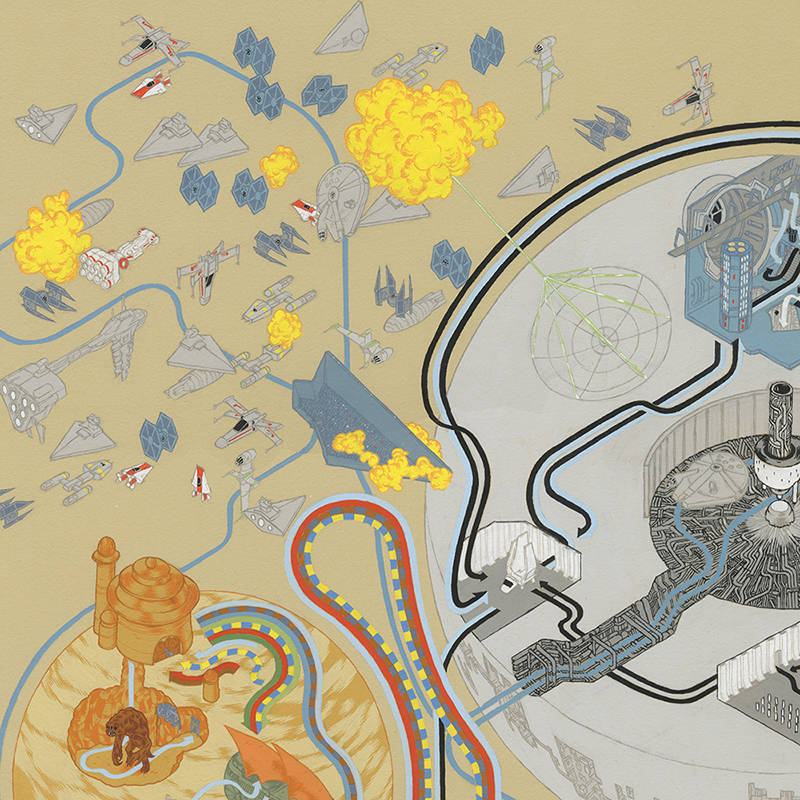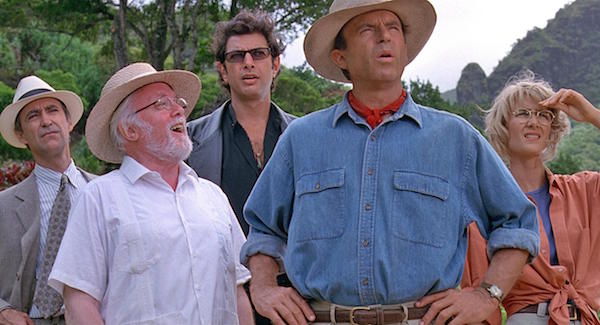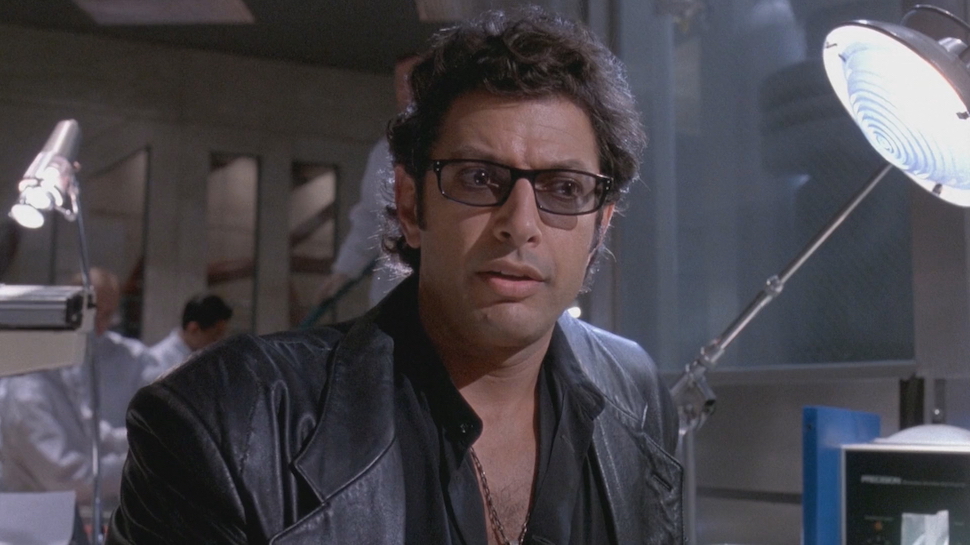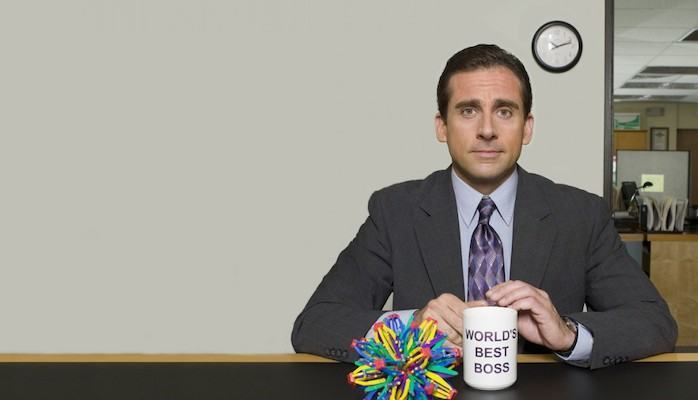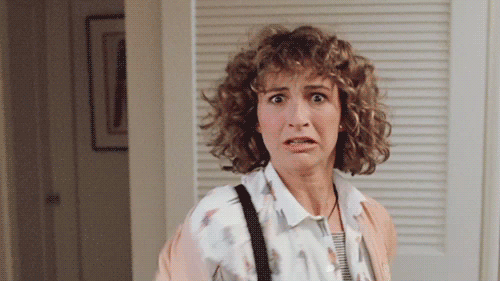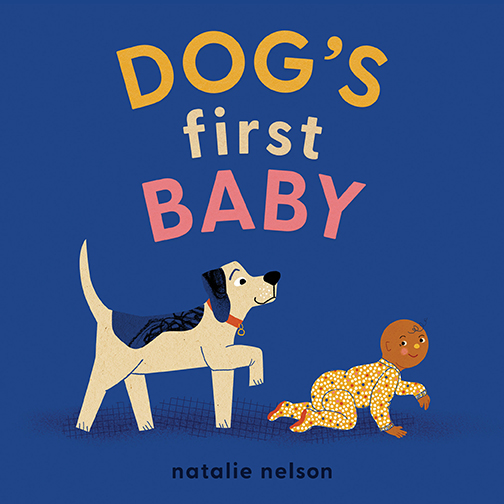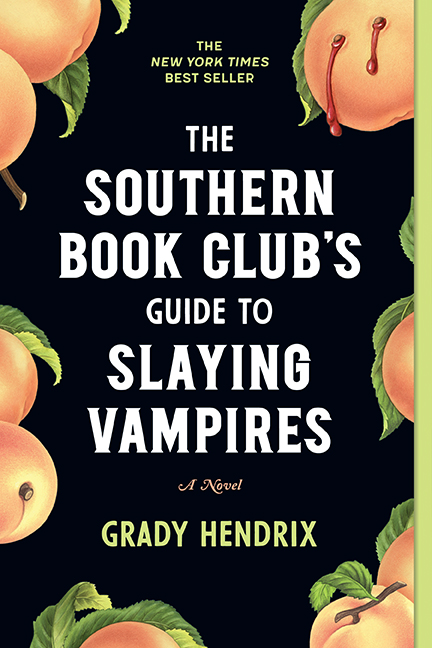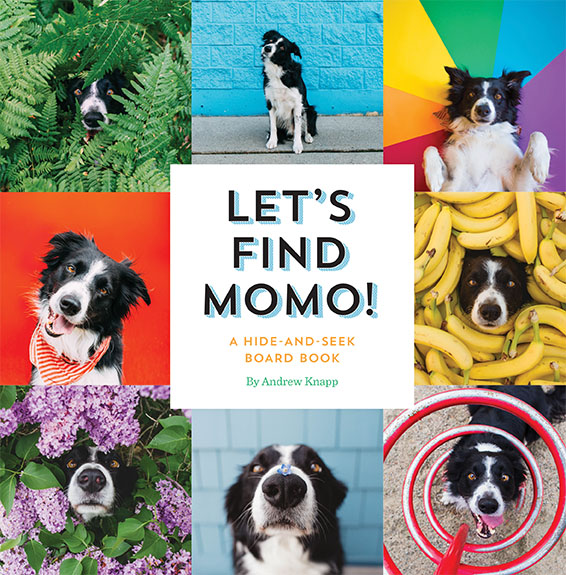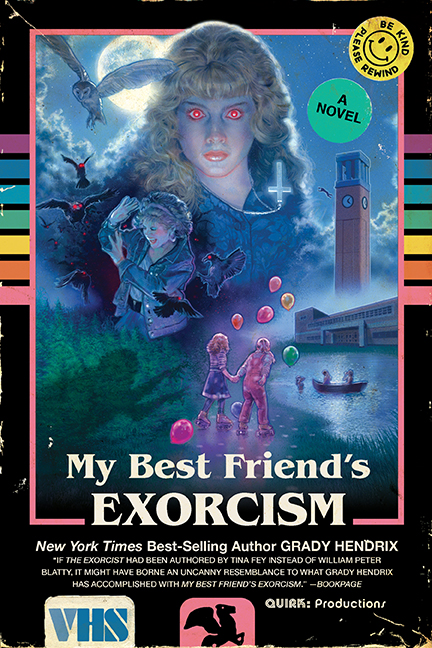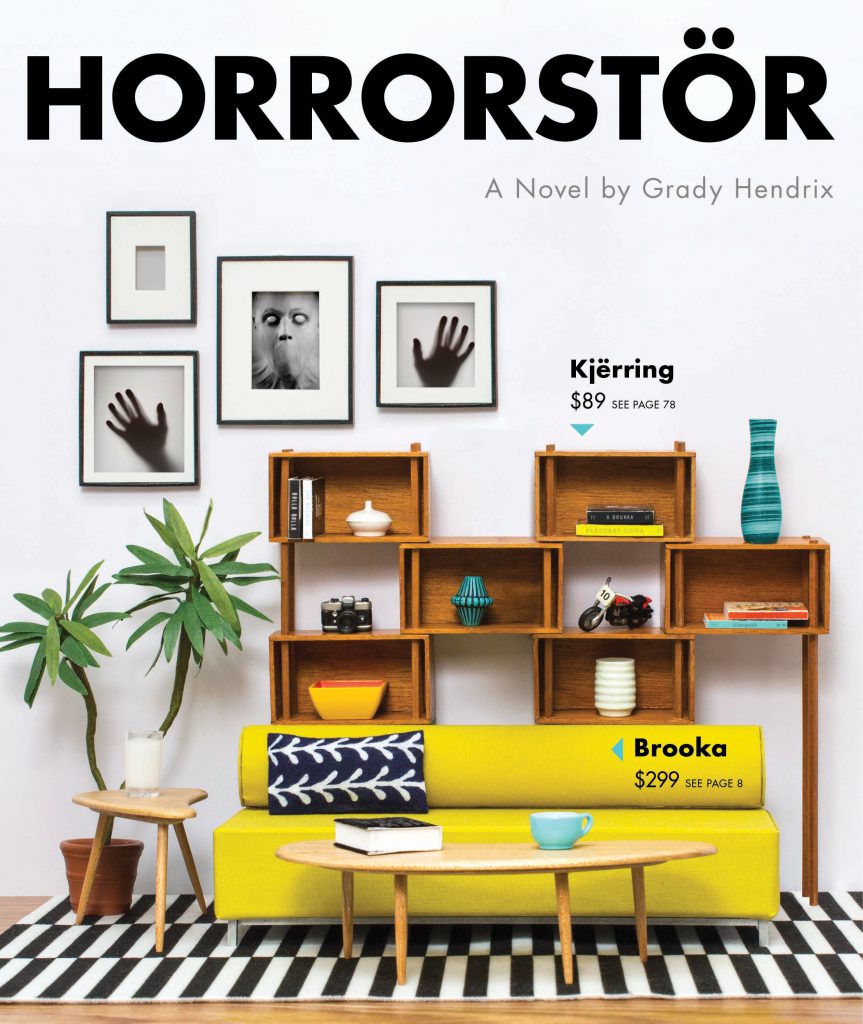Our Blog
The Folks Who Made Me Love Movies: The Art Department
I grew up in an era of great illustration, and it was mirrored in cinema. The movies I loved had posters painted by Drew Struzan and Bob Peak, and within those films were stunning moving images featuring fantastic creations. In particular, that genre that used to be the perennial home for the B-Movie, Science Fiction. I had the posters over my bed and the actions figures, but it wasn't until later that I found out who was doing all this amazing stuff. Even more amazingly, that it was someone's job. And once I knew it was job, it pretty much cleared up the question of what I was going to do with my life.
It's a big reason I started creating the then "Movie Maps" six years ago that would eventually evolve into Cinemaps. I wanted to create an homage to all the folks who were behind the camera: the writers, the location scouts and most of all, the production designers, art directors, and illustrators who made the films I love look the way they do. Making movie maps requires a deep dive into research and digging around for production design, concept drawing, and finding out "how it's made." It's time consuming, but very, very fun. A lot of the time, you're digging around in the films' art department, and these folks do amazing work. As a visual guy, I can tell you—if Star Wars, Guardians, Indy or Alien didn't have the great art department to make the breathtaking visuals and design that they did, they would be great stories in the sci-fi dust bin. And what I've come to find out is that the brilliant cadre of illustrators, designers and creators are densely intertwined. It's like a game of "Six Degrees of Kevin Bacon," only you rarely need six degrees. In most cases, it's one or two. While we tend to attribute much of our popular cinematic obsession to names like Spielberg, Lucas, and Kubrick, and Cameron, I think we overlook some the most important contributors: the folks who made the nuts and bolts settings, spaceships, and environments that became our current popular cinema. Here are two of the names that can help you connect a heckuva lot of films via that great creative engine of film, the art department.

From The Empire Strikes Back
1. Harry Lange
Harry Lange had a finger in just every significant movie pie in Hollywood. While the Empire Strikes Back (for which he was Production Designer) and Jedi (Set Decorator) are the only films he directly worked on in my book, he was key visual influence on quite a few films I've loved and mapped. First and foremost, he was the was one of the key designers of Kubrick's landmark 2001: A Space Odyssey. It wasn't much of stretch for Lange; he left his job at NASA where he was Section Head for the Future Projects Staff which visualized and illustrated proposed interplanetary projects and deep space missions to go work for the movies. He joined Kubrick's 3-year film-making epic as an illustrator and production designer. In essence he left the coolest job in the world—for the coolest job in the world.
Lange had a big part in designing all the ships, the Space Station, the Moon Base, and even the ol' Monolith itself (although he wanted a pyramid). His imprint is indelible. In fact, one of the most important parts of the movie, HAL's singing the old standard "Daisy, Daisy" was inspired by Daisy Lange—Harry's wife. Any illustrator or production designer who talks about Star Wars, the Star Trek movies, Alien—they all have one story about going to theater and seeing 2001, and have their minds blown. While 2001 isn't a part of the Cinemaps collection, its fingerprint is all over the place. While he would have a direct hand in Empire and Jedi as production designer/art director, Lange was already a big influence on Dan O'Bannon in 1969 who would go on to co-write his fellow film student John Carpenter the cult hit Dark Star (1974). O'Bannon would move onto write Star Beast—the script that would become Alien (1979), which would pull together an incredible talent base all of whom were heavily influenced by 2001. More to come on that later.
But that's not where Lange's story ends. While he was certainly a masterful hand at believable sci-fi, he was also a deft hand in dealing with fantasy. He was the Production Designer for the Dark Crystal (1982)—another highly influential movie directed by the puppet king, Jim Henson. Henson of course would work with Lucas on Star Wars (along with of course creating the Muppets). Henson would go on to make the iconic Labyrinth, which I mapped for Cinemaps. Henson always credited Dark Crystal as being the movie that allowed them to learn what they needed to learn to make Labyrinth.

Paths of the Labrynth process shot
So if we want to get from Star Wars to Lord of the Rings in two steps, Lange is the key. Lange was Production Designer on Empire and Dark Crystal. Dark Crystal's conceptual designer was the great fantasy illustrator Brian Froud, a job he would reprise for Henson's Labyrinth. Brian Froud collaborated with his fellow Englishman and fantasy titan, the great Alan Lee on the near biblical fantasy book Faeries. Alan Lee was one of the driving forces and inspirations for the visual identity of Jackson Middle Earth in his Lord of the Rings Trilogy. Okay—so two and half steps.

"Paths of the Ring" Lord of the Rings detail
Amazingly, there's a third connection with another genre featured in the book: comedy. Along with teaming up with Henson for production design for The Great Muppet Caper, Lange would team-up with Terry Gilliam and Terry Jones and Monty Python to work on The Meaning of Life, 8 years after The Holy Grail.
2. Ron Cobb
Ron Cobb was an L.A. kid and outstanding talent who got swept up by the film industry. Like Lange, Ron Cobb shows up everywhere. In fact, he probably has the most direct links of anyone in the book. Cobb's credits include work on Raiders of the Lost Ark, Alien, he was even called in to add his visual panache to Back to Future's time traveling DeLorean. But let's go back to the art department on Alien. It's a pretty special bunch and it represents sort of nexus point of film and illustration. In a way, it all kind of starts with Ron Cobb. Dan O'Bannon had actually enlisted Cobb to help him make Dark Star with John Carpenter. Cobb was a great political cartoonist and the ever audacious O'Bannon called up Cobb to see if he could help him out with his ever growing sci-fi student film, only to find that Cobb had a deep affection for sci-fi. O'Bannon also discovered that besides being a great cartoonist, Cobb was also an incredible painter, draughtsman, and designer.
After the success of that collaboration, O'Bannon and Cobb were swept up into the most famous film project that never was: Chilean filmmaker Alejandro Jodorowsky's Dune. Jodorowsky flew O'Bannon and Cobb to Paris where they met the Austrian artist H.R. Giger, and British sci-fi book cover illustrator Chris Foss, and French comics genius Jean-Giraud, AKA Moebius. Much of that roster of greats would get sucked into Ridley Scott's and Alien written by O'Bannon. Ron Cobb would design the Nostromo's incredible interior, and have a hand in the exterior. Foss would conceptualize much of the Nostromo's mining rig and influence the exterior. Moebius chipped in some spacesuit concepts later finished by John Mollo. And Giger would come to define sci-fi psycho sexual terror with with his Alien creature designs as well as the dark art nouveau/bio mechanical look of the derelict alien spaceship and it's interior.

"Paths of the Future" Back to the Future detail

"Paths of the Nostromo" detail

"Paths of the Nostromo" Detail
After Alien Cobb would design the famous flying wing the gets blown up in Spielberg's 1981 Raiders of the Lost Ark. As a side note, if you want an illustrator's hand defining the essence of a film, check out Jim Steranko's paintings conceptualizing Indiana Jones, which were created from a few notes from Lucas and Spielberg. It's incredible. Anyway, Cobb would go on work on James Cameron's 1986 Aliens with Syd Mead. A giant in his own right, Mead was famous for his retro-futurism and huge creative influence on Scott's follow up to Alien, the dystopian film noir Bladerunner, also 1982's Tron, and Star Trek: The Motion Picture.

"Paths of Raiders" detail, Raiders of the Lost Ark
So you're probably saying, "Star Trek: The Motion Picture? Who cares about that?" Well, along with being a stilted revival of the franchise, it paved the way for the fantastic Star Trek II: Wrath of Khan, which is included in Cinemaps. What's the connection? Well, story and feel wise, not a lot. Nicholas Meyer's militarized Federation was jarring for a lot of people, first and foremost series creator Gene Rodenberry. But given the huge budget Rodenberry "squandered" on Motion Picture, Meyer made Khan for relative peanuts. Why? Because they simply reused all the lovingly and brilliantly designed props, models, and ships from Motion Picture. That means that Wrath of Khan bears the uncredited work of Syd Mead, and another giant of sci-fi, the amazing Robert McCall. Space Station Regula I is actually a space station from Motion Picture flipped upside down. The Enterprise's foe, the Reliant, was also cobbled together from models left over from Motion Picture's art department. In a weird twist, the Reliant drawings were looked at upside down, with the nacelles on the bottom, and approved as such, and they just stuck with it. Sometimes wrong is right.

"Paths of Khan" details, Wrath of Khan
Ron Cobb also contributed creature designs for Star Wars: A New Hope, which connects him to another all time great: Ralph McQuarrie. Now I know credit goes to Lucas for his mish-mashing of a knight's tale with eastern philosohy—that's what makes Star Wars work. But let's face it. It's also because the design is so good, and it's a ton of McQuarrie. McQuarrie makes it sing. McQuarrie's Star Wars work also connects to another movie I've mapped in the book, Fritz Lang's visionary 1927 Metropolis with it's vision of the Machine Man, which was fully redeveloped into McQuarrie's C3PO design. And remember, who shows up to be the Production Designer of the follow up Empire? Our old pal Harry Lange.

Metropolis process shot

"Paths of Return" Return of the Jedi battle detail
So if we wanted to get from Raiders of the Lost Ark to Guardians of the Galaxy in one step, easy peazy. Ron Cobb worked on Raiders and worked with Chris Foss on Jodo's Dune and Alien. Chris Foss would not only conceptualize ships for Guardians but serve as a major influence on James Gunn's "unapologetic color" approach on the film. Gunn in fact used Foss' work to help sell his concept of the film.

"Paths of the Guardians" Guardians of the Galaxy process shot
In the end, there's two ways of looking at this tangled web. You can see it as small world where these artist are competitors and co-conspirators, pushing eachother to higher heights and more creative solutions with a fairly collegial atmosphere, hopping from job to job. I think that's basically true. Movies are a collaborative exerciese. But that's not the whole truth. These guys were and are giants. They cast long shadows in the world fo sci-fi and fantasy, and they will for a long time. The geniuses who come next will do so standing on the shoulders of Lange, Cobb, Foss, Mead, McQuarrie, Henson, Lee and many others. I can't wait to see what they come up with next.
Posted by Andrew DeGraff
Literary Roles of Tilda Swinton
Photo by JESHOOTS.com from Pexels
The incomparable Tilda Swinton has been on the big screen for over thirty years, bringing us characters who run the gamut from modern day mothers to fantasy ice queens, vampires and royalty, predators and angels. Her unique look and commanding presence is incredibly distinctive, yet it can be wrapped around a range of roles that most other actors would struggle to encompass. Perhaps it is not surprising, then, that Swinton has brought to life multiple characters from the pages of books—so many, in fact, that we aren’t even going to list them all. Instead, we take a look at her ten best and biggest—whether blockbuster movies, starring roles, amazing adaptations, or something else that makes these literary roles worth watching.
Posted by Rose Moore
Michael Crichton Films that Deserve a Remake
[Movie still form Jurassic Park, Universal Pictures]
Michael Crichton may be the author responsible for some of the most beloved and iconic science fiction on shelves today, but for some reason, his work hasn’t always weathered the jump to screen very well. While Jurassic Park endures as a modern classic, and Westworld is enjoying new life as a critically acclaimed HBO original series, most of Crichton’s sci-fi stumbled in the transition from page to screen. The screenplays often made sweeping changes to the stories and characters of the novels, the effects couldn’t keep up with the imaginative visuals described in the books, and talented actors were often stuck with clunky dialogue and ridiculous, nonsensical plots. Furthermore, while Crichton’s novels forced the reader to grapple with complex questions about humanity, cause and effect, communication, nature, and more, the movies rarely concerned themselves with such thoughtful reflection, retreating instead into spectacle and action and abandoning the very things that made the novels great.
However, now that special effects technology has evolved and filmmakers are increasingly making riskier, more cerebral films, perhaps we are due for a Crichton renaissance. Hollywood is already keen on revisiting many of the films and TV shows of yesteryears, so taking another cinematic swing at a few of Crichton’s novels seems like a natural next step.
Posted by Lauren Thoman
All the Ways Jeff Goldblum Has Broken the Internet
[Movie still from Jurassic Park, Universal Pictures]
There is only one man who can consistently break the Internet, and his name is Jeff Goldblum. We love him, you love him, and the Internet is crazy for him! Here are a few examples of Jeff Goldblum doing what he does best…. being his lovable self and slaying the web.
Posted by Sandra Woolf
The Best and Worst Bosses in Pop Culture
[TV still from The Office, NBC Universal Television]
Pop culture is full of leaders of all stripes, from starship captains, kings, and queens, to office managers and school principals. Some consistently inspire greatness, while others have turned slacking off and screwing up into an art form. Today we’ll take a look at some of the best – and worst – bosses that pop culture has to offer.
Posted by Lauren Thoman
How To Dress For The 80s And 90s This Halloween
Halloween is right around the corner, and if you are no longer in your 20s, here’s something really scary: the ‘80s and ‘90s are now costume themes!
That’s right, this year two of the most popular themes for Halloween are the ‘80s and ‘90s, and that means almost unlimited nostalgic costume-options, no matter how you like to rock the 31st.
Posted by Rose Moore
